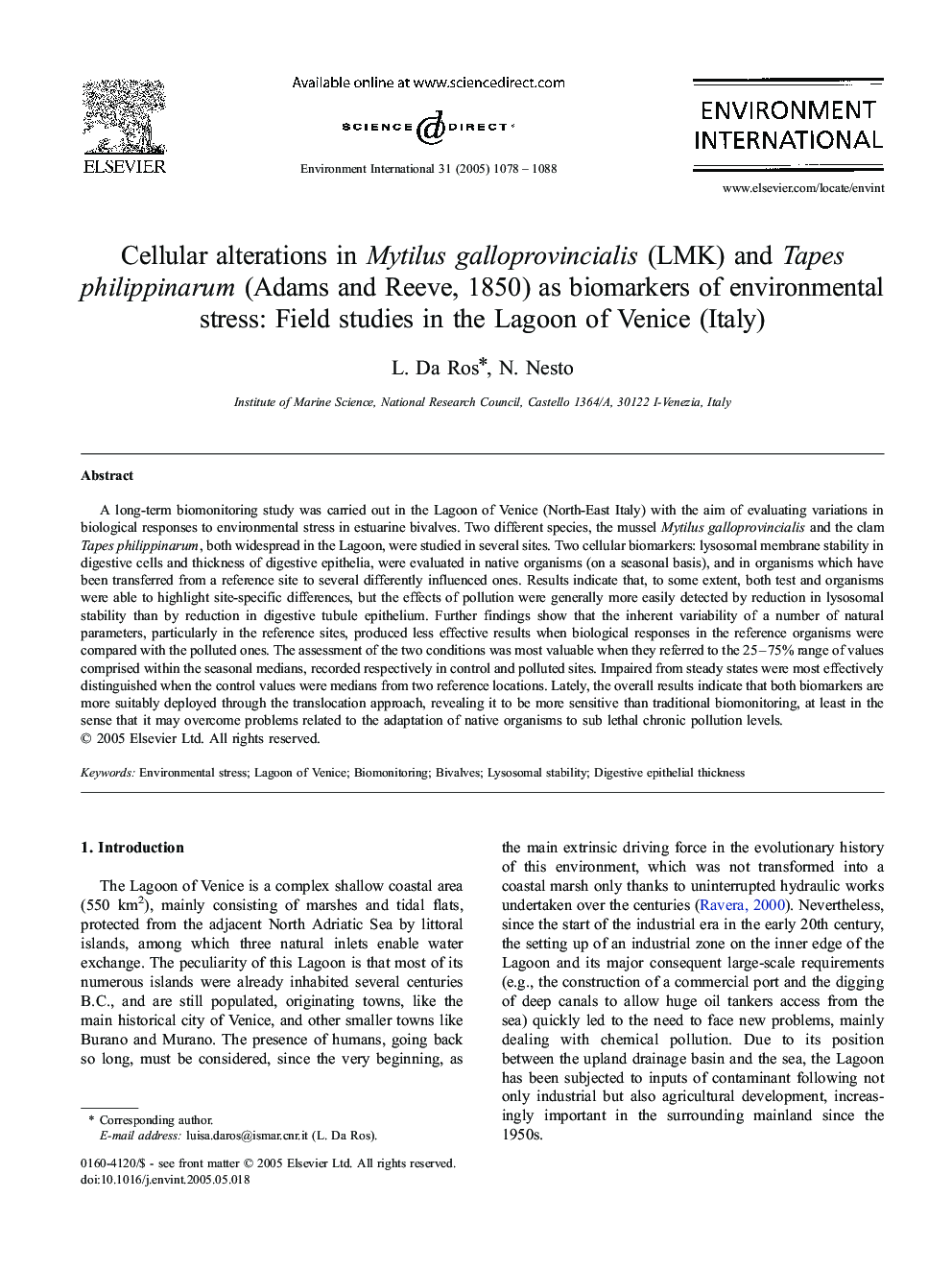| Article ID | Journal | Published Year | Pages | File Type |
|---|---|---|---|---|
| 9455484 | Environment International | 2005 | 11 Pages |
Abstract
A long-term biomonitoring study was carried out in the Lagoon of Venice (North-East Italy) with the aim of evaluating variations in biological responses to environmental stress in estuarine bivalves. Two different species, the mussel Mytilus galloprovincialis and the clam Tapes philippinarum, both widespread in the Lagoon, were studied in several sites. Two cellular biomarkers: lysosomal membrane stability in digestive cells and thickness of digestive epithelia, were evaluated in native organisms (on a seasonal basis), and in organisms which have been transferred from a reference site to several differently influenced ones. Results indicate that, to some extent, both test and organisms were able to highlight site-specific differences, but the effects of pollution were generally more easily detected by reduction in lysosomal stability than by reduction in digestive tubule epithelium. Further findings show that the inherent variability of a number of natural parameters, particularly in the reference sites, produced less effective results when biological responses in the reference organisms were compared with the polluted ones. The assessment of the two conditions was most valuable when they referred to the 25-75% range of values comprised within the seasonal medians, recorded respectively in control and polluted sites. Impaired from steady states were most effectively distinguished when the control values were medians from two reference locations. Lately, the overall results indicate that both biomarkers are more suitably deployed through the translocation approach, revealing it to be more sensitive than traditional biomonitoring, at least in the sense that it may overcome problems related to the adaptation of native organisms to sub lethal chronic pollution levels.
Related Topics
Life Sciences
Environmental Science
Environmental Chemistry
Authors
L. Da Ros, N. Nesto,
